Top > Our Foundation > Founder > The Life of The Founder
Birth and Childhood
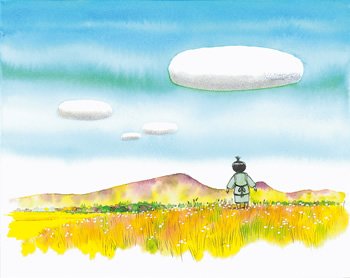
The Founder of the Konko Faith was born on September 29, 1814, in a small village called Urami (present-day Konko Town, Okayama Prefecture, Japan). Given the name Genshichi, he was the second son of Kandori Juhei and Shimo, both farmers.
Urami is a small quiet village located about two kilometers northwest of present-day Konkokyo Headquarters. Genshichi was often carried by his father's back and visited various shrines and temples.
As Genshichi was the second son and thus not expected to take over the family lineage or farm, he was arranged to be adopted in the fall of 1825. Genshichi was adopted by Kawate Kumejiro and Iwa, and he was renamed Kawate Bunjiro, or Bunji.
When Bunji was 13, he received education from Ono Mitsuemon, the village headman for two years. It was rare for such an intellectual to be living in a village. This valuable education became his asset.
Young Days

Bunji was not in good health during his early years. As he recalled his childhood experiences when writing the Konko Daijin On-Oboegaki, he remembers how he often suffered from stomach illness. However, he was an assiduous worker. Bunji would carry more pine branches than other village boys, and he voluntarily worked for the village construction. Through this way, he gained great trust from the villagers.
In 1831, when Bunji was 17, his adoptive mother gave birth to a son. They named him Tsurutaro. However, Tsurutaro died of an illness at the early age of five. To compound this tragedy, Bunji's adoptive father Kumejiro, who was now the age of sixty-six, contracted a disease and a few weeks later followed his son in death.
With the death of his adoptive father, Bunji became the head of the household at age 23. He changed the family name to Akazawa, according to his adoptive father's will. Bunji's marriage was arranged at this time, and he married Furukawa Tose.
As a Farmer
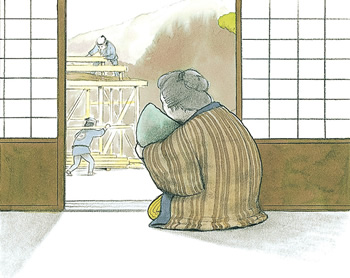
Bunji was a hard worker. As a result, Bunji acquired more land and built new additions to his house, and later he was able to construct a new house. This was a considerable achievement, ranking him in the top ten landholders in a village of 130 households. However, as humble and sincere as Bunji was, he could not escape sufferings.
The celebration and joy of the birth of Bunji and Tose's first son, Kametaro, was short lived, for Kametaro died of an illness three years later. In addition, Bunji and Tose treasured their first daughter, Chise, only to lose her a year later, despite medical attention and prayers. Then, Makiemon, Bunji's second son, died at the age of seven, presumably in the early stages of smallpox. He also bore the loss of his two oxen, which were considered by farmers to be almost equal in value to family members.
During Bunji's time, folkloric superstitions, divinations, and folk religions ran rampant among the masses. Most of these beliefs came to Japan from China between the seventh and eleventh centuries, and they eventually became common beliefs. An ominous deity called "Konjin" was part of this folklore. Konjin was thought to be the most powerful deity, and thus became the most feared deity. People believed Konjin resided in various directional locations (determined astrologically). These directions were to be avoided by all who wished to avert Konjin's wrath. As an ardent follower of these folk beliefs, each time Bunji constructed a new building, such as a bathroom or storehouse, he would have the Days and Directions checked to select an auspicious day and direction. However, as Bunji made additions to his house, he encountered the succession of deaths in his family. Because of his continued misfortunes, Bunji started to suspect whether he had violated construction taboos.
Encounter to Kami
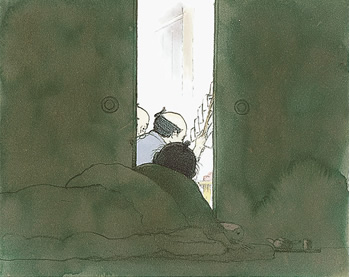
The age of forty-two was considered to be the most critical for a man in traditional Japan, because the number forty-two can be pronounced shi-ni, which is phonetically identical to the term "death" in Japanese. Therefore, Bunji abided by the traditional beliefs associated with his age in order to avert any misfortunes.
However, in June of Bunji's forty-second year, he collapsed and became bedridden with a serious illness. His illness affected his throat so severely that he was no longer able to speak or drink, causing his doctors to give up hope for his recovery.
Bunji's relatives and neighbors worried that he would die because he had angered Konjin. They gathered at his house and had Tose's brother, Jiro, give prayers. Jiro then became possessed by a deity, who declared that Bunji had been irreverent to Konjin while building his house. Since Bunji properly abided by the traditional beliefs of the Days and Directions, he was not irreverent according to the standards of those days.
However, upon hearing Jiro's words, Bunji prayed and became deeply moved by the words regarding the construction of his house. Just as soon as he realized that the construction must have offended the deity, his throat cleared up enabling him to speak, and he apologized from his bed. With his acknowledgement and acceptance of his faults, the deity revealed that Bunji was to have perished with this illness, but due to his faith and sincerity, it was changed to a lighter throat ailment. The deity also forgave Bunji and promised to have him recover from his illness.
In this way, an interdependent (Aiyo kakeyo) relationship between Kami and people was opened to the world.
Devotion to Mediation
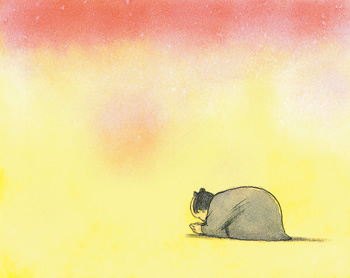
After his recovery, Bunji became a devoted believer and lived according to Kami's wishes. On November 15, 1859, Bunji received a request (now referred to as the "Divine Call") from Kami: "There are many people like yourself who have sincere faith in kamis but still have many problems. Help these people by performing Toritsugi (Mediation)" (Memoirs: 9:3.6). Bunji accepted this request and fully committed himself to performing Mediation at the Worship Hall of his home. This was the beginning of Konkokyo.
Many troubled people came to visit our Founder, but because he was a farmer, his new role as a Mediator went against the established norm since people belonged to a fixed social class. Though he received harsh criticisms, our Founder never wavered and his heart was always towards Kami.
From the shift of the Edo era to Meiji era, many changes occurred. In 1868, Kami allowed Bunji to have the divine title, Ikigami Konko Daijin. Moreover, he placed a banner in front of the Worship Hall that read "May there be peace throughout the world, prosperity in all countries, and safety for all people," (Memoirs: 16:9.3) and prayed daily.
However in 1873, the Meiji government passed a law which said, "All exorcists, fortune tellers, necromancists and spiritualists lead others astray. Henceforth, such people are strictly forbidden to practice." Because Konko Daijin did not have permission as a spiritualist, he was soon ordered to take down the Altar in his Worship Hall.
The Way Broadens
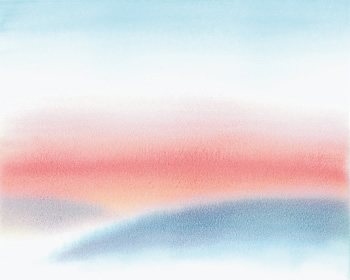
Retreating from the Worship Hall and the public into the back rooms of his house, Konko Daijin meditated alone. Kami told Konko Daijin, "Take a rest without feeling disappointed" (Memoirs: 21:3.4). This was to be the most significant trial in his spiritual development. At this time, he was 60 years old.
With the role of a Mediator taken away, banned from offering prayers to the Altar, and having even the Altar itself taken away, Konko Daijin reflected within himself and on Kami ever more deeply. On March 13, 1873, he was told, "Konko, be reborn" (Memoirs: 21:4.1). In that following April, Kami revealed the "Reminder of Heaven and Earth," or Tenchi Kakitsuke. Through these events, it became evident what kind of deity Tenchi Kane No Kami was, and the fact that our Founder was sent to create a world where Kami and people live mutually.
Propagation activities were resumed after a month under strong police surveillance. As one who was sent from Kami, Konko Daijin said, "Though they say the world is becoming civilized, it is not. It is collapsing. Hence, Konko has come forth to save the world" (GI: Ichimura Mitsugoro, 1-17). Konko Daijin expressed his greatest desire: "I am aspiring for a blessing which will completely embrace the world with this Faith" (GII: Kunieda Sangoro, 11). Disciples were cultivated to realize this wish.
On October 10, 1883, at the age of sixty-nine, Konko Daijin passed away peacefully in the light of a new day. Though he passed away, the spiritual force that gives us energy refers to the workings of Konko Daijin even after his death. The last entry in the Oshirase-goto Oboecho, nineteen days before his death, is the following revelation, "For the sake of all people and to save those who give Me requests, I shall sacrifice (substitute) you. This is for the eternal dignity of Konko Daijin's virtue" (Revelations: 25:15.2).
Founder's History
| 1814 | Birth of Konko Daijin (Founder) |
|---|---|
| 1825 | Adopted by Kawate Kumejiro |
| 1836 | Death of Kumejiro; Became the family head; Surname changed to Akazawa; Founder (age 23) married Furukawa Tose (age 18) |
| 1839 | Birth of Kametaro |
| 1842 | Death of Kametaro; Birth of Makiemon |
| 1845 | Birth of Nobujiro |
| 1847 | Birth of Chise, death of Chise the following year |
| 1849 | Birth of Mohei |
| 1850 | Sudden death of Makiemon Death of an ox |
| 1851 | Birth of Kura Death of an ox |
| 1854 | Birth of Unojo |
| 1855 | Founder's serious illness at age 42 |
| 1858 | Birth of Kono |
| 1859 | Divine Call |
| 1864 | Divine request to construct the Worship Hall |
| 1868 | Received the Divine title of Ikigami Konko Daijin |
| 1873 | Ordered to remove Altar Tenchi Kakitsuke distributed by Kami's orders Received a revelation, revealing Kami's characters, and that He sent Ikigami Konko Daijin to this world |
| 1883 | Founder passed away on October 10, 1883 He was 69 years old |


